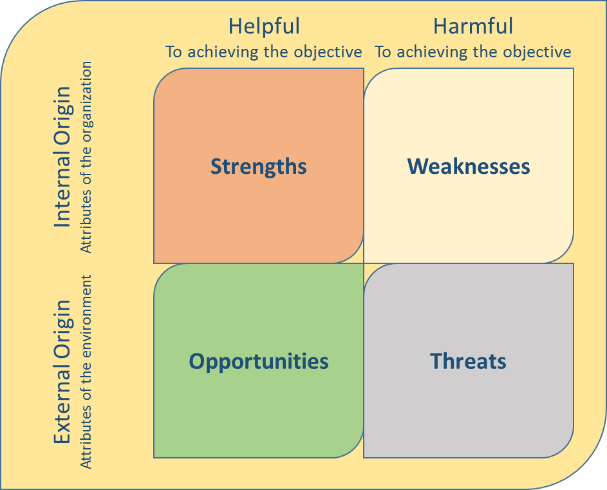Delivering successful projects enables organizations to reach their strategic goals quickly with enhanced long-term commercial results.
Connecting projects to organizational strategy can improve projects in several areas, including:
- Preparation of business cases
- Request management
- Planning and resource allocation
- Risk management
- Budget control
- Collaboration
This article introduces tools and frameworks like PESTEL and SWOT/TOWS to guide you in the analysis of your organization’s business strategy.
What is a Business Strategy?
Before starting an analysis of business strategy, it’s important to define the term ‘strategy’. Johnson & Scholes (2005) define strategy as “the direction and scope of an organization over the long term.”
Similarly, Porter (1995) describes it as “a process of analysis which is designed to achieve the competitive advantage of an organization over another in the long term.”
Both definitions stress the “long-term” approach that could determine the success of your company over the next five to ten years.
Key Frameworks in Business Strategy
Robbins and DeCenzo (2013) emphasize the importance of organizational strategy and detail a nine-step framework that involves strategic planning, implementation, and evaluation.
The first seven steps involve strategic planning, while the last two focus on the execution and evaluation of the business strategy and analysis.
A merging of the external environment (steps 2 & 3) with the internal environment (steps 4 & 5) will result in an assessment of the organization’s opportunities and is often referred to as a SWOT analysis.

Evaluating External and Internal Environments
In order to fully evaluate your company’s strategy, focus on analyzing the external environment. This includes:
- The conditions
- Entities
- Events
- Factors that influence the organization’s activities and decisions.
A structured project portfolio can help organizations assess which projects to pursue based on their alignment with company strategy.
Various frameworks and models are available to examine a company’s external environment, including competitor analysis and market research.
Galavan (2004) highlights that strategy evolves constantly, describing it as “a living process, not just a set of well-defined tools.”
Strategic Analysis Using the PESTEL Framework
A PESTEL analysis helps organizations to analyze and monitor the macro-environmental factors that have an impact on the company. The analysis identifies threats and weaknesses, which can be employed further in a SWOT analysis.
Organizations can also use business intelligence projects to gather and analyze relevant data, improving the accuracy of their PESTEL assessments. The PESTEL Framework categorizes the environmental factors into six key environmental types, as illustrated in Figure 2.
To apply PESTEL effectively, relevant factors that would impact the organization must be identified. It is also essential to consider future factors that will be important in the near term.

Aligning Strengths with Opportunities Using SWOT/TOWS
SWOT (Strengths, Weaknesses, Opportunities, and Threats) is a structured planning method that evaluates those four elements. It helps organizations identify internal and external factors that affect the success of a business venture or project.
Applying SWOT to Business Objectives
The goal of SWOT is to help an organization optimize its strengths, circumvent weaknesses, capitalize on opportunities, and manage threats. Effectively working with a project sponsor during this process ensures that the value proposition of each project aligns with the company’s overall goals.
The successful implementation of SWOT does not depend on whether an organization should use it but rather on how you should use it.
Watkins (2007) argues that many organizations focus on their internal factors (Strengths and Weaknesses) and not enough on the external factors (Opportunities and Threats), resulting in a flawed analysis. He suggests starting with Opportunities and Threats for a more balanced analysis.

Introducing the TOWS Matrix
The TOWS Matrix, introduced by Heinz Weihrich (1982), complements SWOT by transforming analysis into actionable strategies. It matches external opportunities and threats with internal strengths and weaknesses.
The next step of analysis after SWOT is associated with the externally-focused TOWS Matrix and helps organizations contemplate the options that could be pursued.
To do this, you match external opportunities and threats with your internal strengths and weaknesses, as illustrated in the matrix in Figure 4. Galavan (2004) refers to this as “strategy from the inside-out,” where strengths build on competencies to exploit opportunities.
Standardize your project management processes with Microsoft 365
Watch a demo of BrightWork 365 project and portfolio management templates for Microsoft 365, Power Platform, and Teams.

